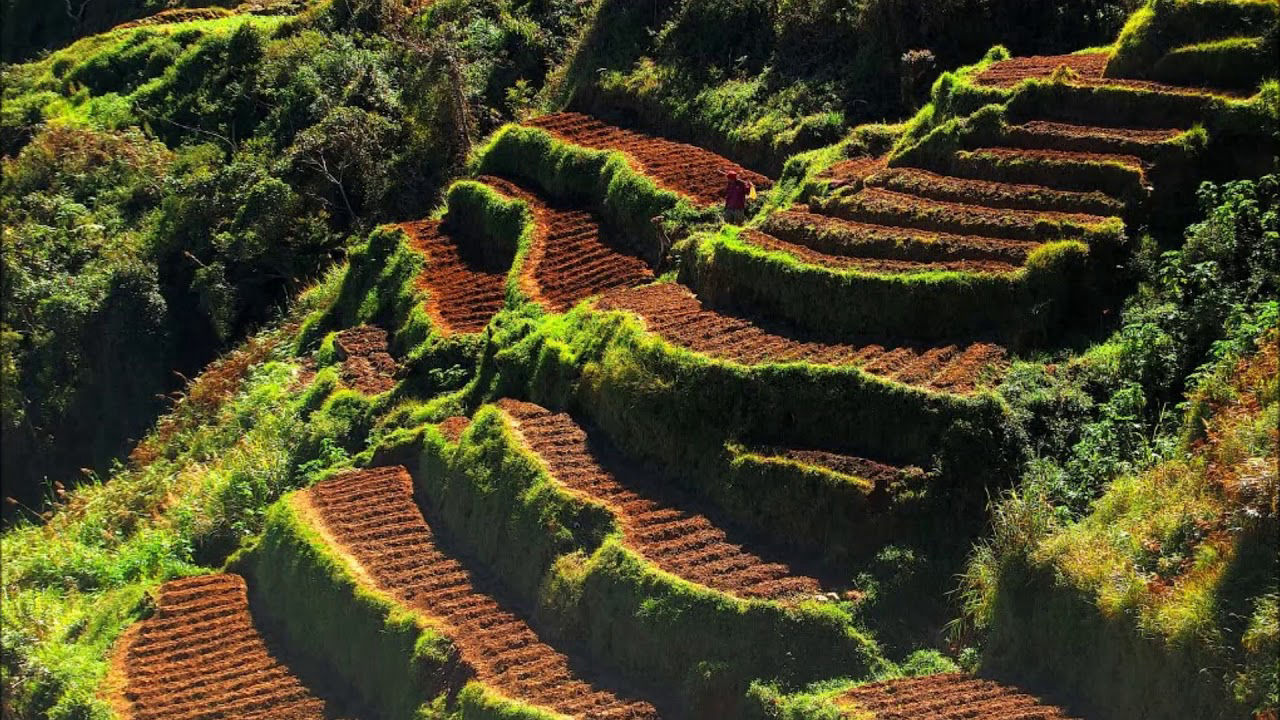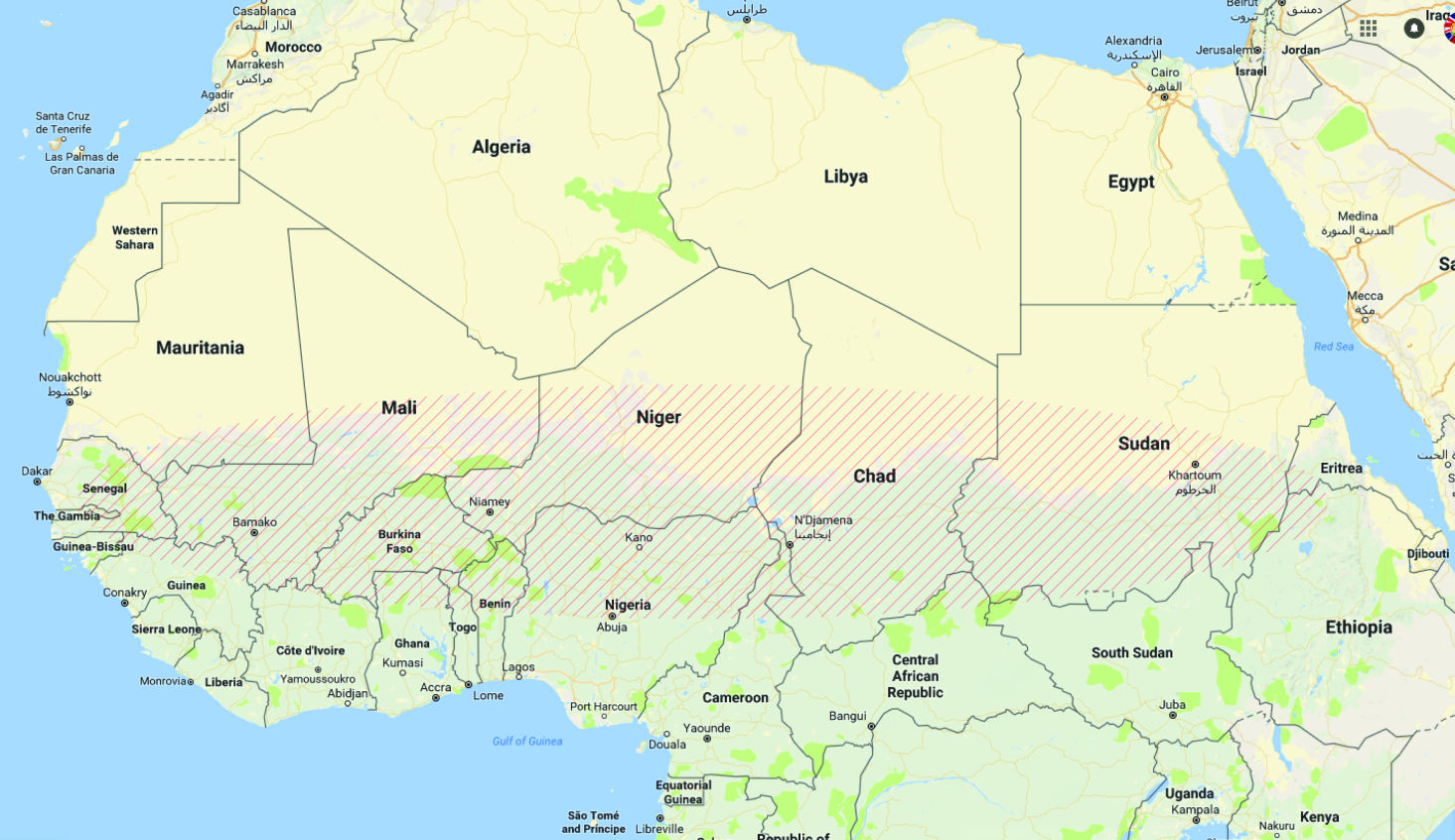
Desertification 1
Desertification is the degradation of semi-arid land by human activities and change in climate. It is an environmental degradation process which leads to the decline of productive land. A third of land worldwide is at risk from desertification, and 250 million people are already affected. 46% of Africa is at risk from desertification. Desert is encroaching into semi-arid desert margins.
Physical causes of desertification –
climatic change
Lower rainfall
– in subtropical areas where most semi-arid
areas are, surface water and groundwater will be
reduced, because it is used up or evaporated.
The volume of water for vegetation is reduced, so the vegetation dies.
There are fewer plants and trees, so there are
fewer roots to anchor the soil. This leads to
soil erosion.
Higher temperatures - global surface temperature has risen by 0.6 degrees over the last century and is predicted to continue to rise. As temperatures increase, the rate of evapotranspiration also increases. This dries out soils, lowering surface water levels. Vegetation dies, so there is less root anchorage and more soil erosion.
Human activity – the main cause of
desertification
Overgrazing
– if the number of animals increases beyond the
carrying capacity, over grazing can become a
problem. Overgrazing reduces the amount of
vegetation, so there is more soil erosion.
Trampling by animals compresses and breaks down
the structure of soil making erosion more
likely.
Population growth – increases
pressure on land and more food is needed to meet
the growing demand. This leads to further
overgrazing, over cultivation, deforestation and
irrigation.
Over cultivation
– increases in population through high birth
rates and immigration means that there is an
increased demand for food. Farmers leave behind
traditional land use because more land is
required to grow crops. Exploitation of the soil
leaves it without enough nutrients to support
plants, leaving it unproductive. The soil is
then easily eroded.
Deforestation
– If population rises, there is a greater demand
for wood; it is needed for building materials
and fuel. Cutting down areas of woodland also
increases the amount of land available for
agriculture. This leads to more trees being cut
down, so fewer roots mean that soil is more
vulnerable to erosion.
Irrigation – Depletes surface
water and may involve unsustainable pumping of
aquifers. As water levels decrease, water
availability for plants decreases leading to
less vegetation cover and soil erosion. Some
irrigation techniques erode soil directly –
surface irrigation washes top soil away. If too
much water is used to irrigate the crops, excess
can sink into the soil and raise groundwater
levels. If the aquifer is saline, high
concentrations of salt may be brought to the
surface, increasing the salinity of the soil.
This is known as Salinisation, and plants may be
unable to survive.
Land
As fertile top soil is eroded, land becomes
unproductive.
Ecosystems
Less plant life can be supported by the soils.
This means that fewer animals can be sustained, and so biodiversity
decreases.
Populations
If agricultural production decreases to the
point where farmers cannot feed their families
or earn a living, they may have to migrate from
the area. The land which people move to will be
put under increased pressure. If people are
unable to move, a community’s inability to
produce the food they require may led to
famine.
Case study
Desertification in the Sahel
The Sahel is a 3900km long belt that runs East
to West across Africa. It separates the
hyper-arid Sahara from the wetter Savannah to
the South. The Sahel runs through 10 countries,
some of which are the poorest in the world,
including Niger and Mali.

The causes of Desertification in the Sahel
Climate change
– between 1968 and 1997, rainfall in the Sahel
decreased by between 29 and 49%. A 5-year
drought was caused, beginning in 1968, and
droughts were common throughout the 1990s. The
average temperature of the Sahel has also
increased over the past century. This increases
evapotranspiration, reducing ground and surface
water supplies.
Increased population equals more intensive
agriculture
- The population increase in the Sahel is 3% per
year; between 1968-1998, population increased
from 274 million to 628 million. Food production
increases by only 2% per year, so additional
pressure is being put on land. This has led to
over cultivation, over grazing and
over-irrigation. All of these factors increase
desertification.
Deforestation – More space is
needed for agriculture, and so large areas of
forest have been cleared to create more space
for agriculture, usually by slash and burn. Wood
is also needed for energy supply – 82% of all
energy used in the Sahel comes from wood. With
fewer trees, soil is more vulnerable to
erosion.
The Struggle for Survival – effects of
desertification in the Sahel
Erosion of topsoil
has reduced the area of productive agricultural
land in the Sahel. In Mauritania, all that is
left in a 200km wide strip running across the
country. In Niger, 2500 square kilometres is
lost each year to desertification.
As land area decreases, so does the amount of
food produced. Niger can now produce less than a
20th of the food they could 40 years ago. This
causes loss of livelihoods and famine.
Management strategies in the Sahel
Contour Ploughing – ploughing along contours
rather than through them to limit soil erosion
from wind.
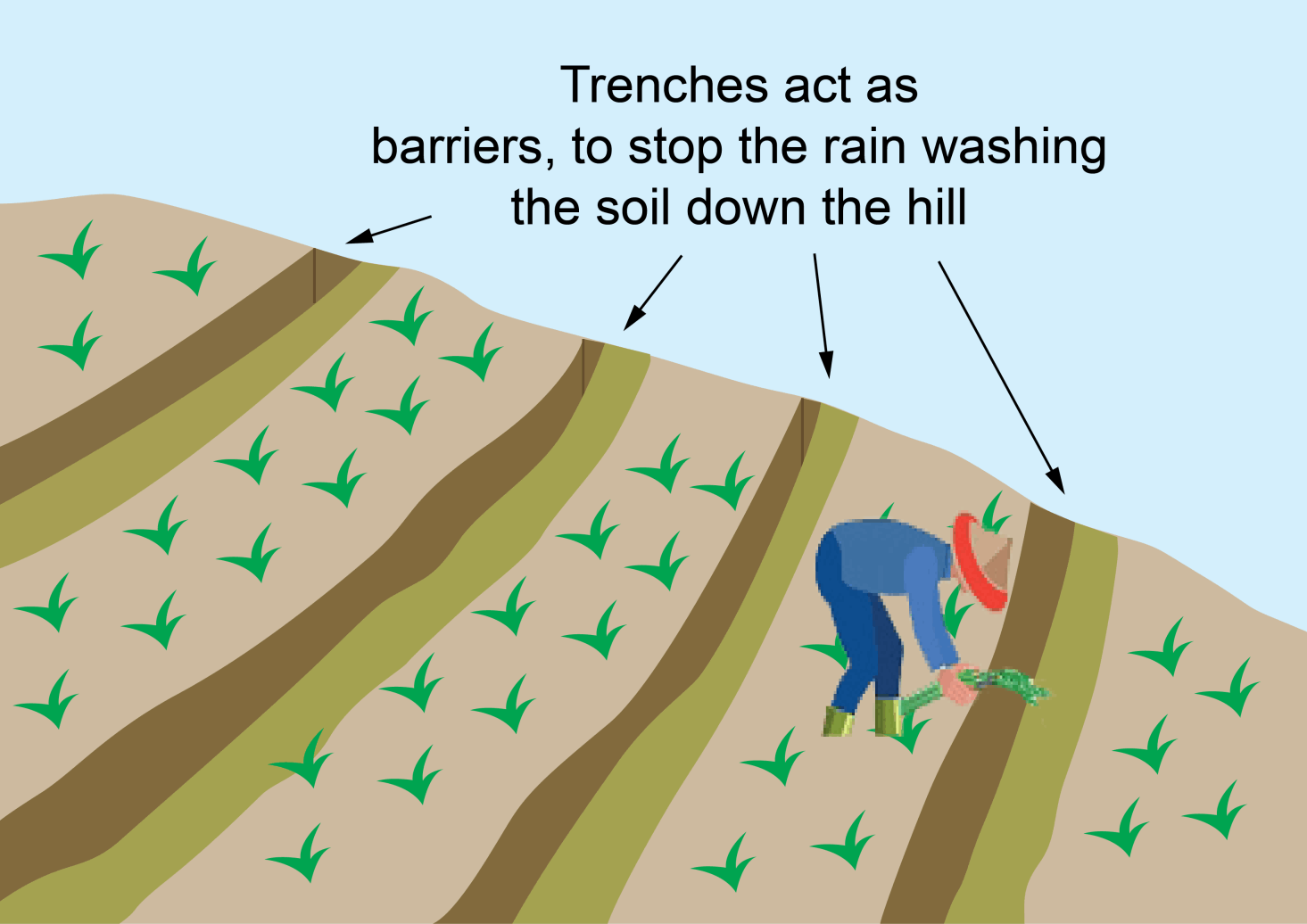
'Magic' Stones –
“Water Harvesting” – rows of
stones placed along contours, slowing surface
run off and protecting top soil. Water contained
long enough for it to soak into soil. Increased
yields by 40% in Burkino Faso.
Careful management of irrigation and the implementation of drip irrigation, which reduces waste and prevents excessive Salinisation. In Senegal, farmers are being educated in the use of drip irrigation. Concrete dams have been built next to rock outcrops to catch rainwater and condensed dew. Storage tanks then hold the water, allowing it to be used for irrigation.
Promoting the use of solar ovens, to reduce the need for fire wood and limit deforestation.
Introduction of an efficient version of the traditional Mogogo stove (or solar oven, shown below) in Eritrea, Sudan and Senegal, which needs 50% less wood than the older versions, reducing deforestation.
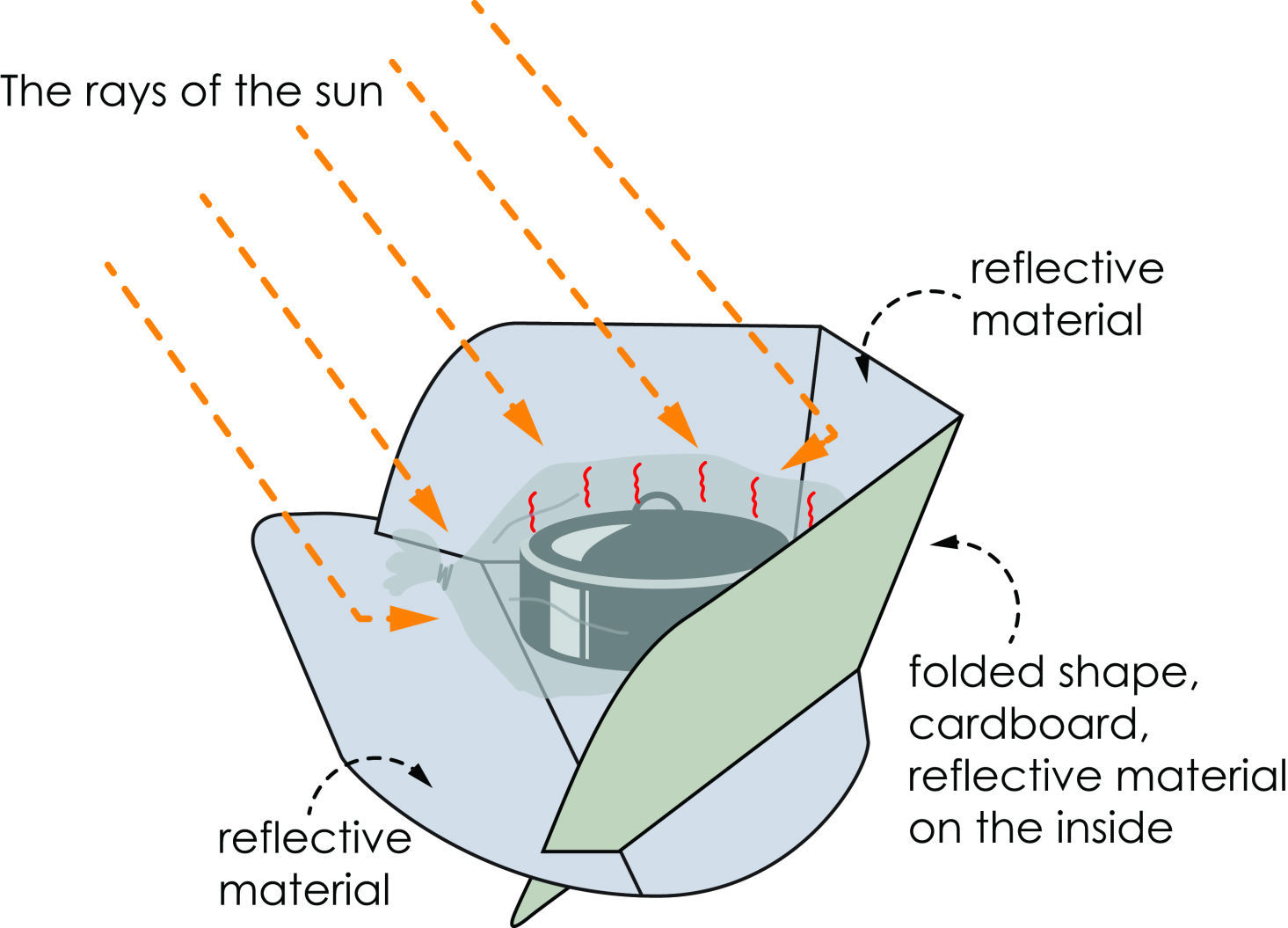
Growing the Jatropha curcas plant in Mali,
around food crops. It can grow in poor quality
soil and is not eaten by animals. Its roots help
to bind soil together and therefore protects
against water and wind erosion. Oil from the
plant can be sold providing a valuable source of
income. The plant can also be burnt, reducing
need for deforestation.
Examples of recent developments relying
upon external aid
Tal Rimah Rangeland Rehabilitation
Project, funded by USAID and US Forestry Service, in
the Badia, Jordan. Stone Walls were built to
retain the limited water, called water
harvesting. Drought tolerant shrubs like
atriplex were planted to provide grazing for
animals, encourage biodiversity and hold soil
together to prevent erosion.
The Eden Reforestation Project
– a charity planted 1 million trees in
Ethiopia’s Rift Valley to reduce dust storms
after years of desertification.
Projet Agro-Forestiere, funded
by Oxfam, in Burkino Faso. Stone lines
constructed along the contours of the land, and
grasses and tree seedlings are planted alongside
the stones during the rains. The contours
channel the rain water to the plants, helping
them to grow.
Note: the name is French.
Evaluating these strategies
Projects funded by external aid can have
negative impacts. During the drought of 1968-73,
thousands of wells were built. Farmers used this
to increase the size of their herds, but the
land could not cope with the overgrazing that
followed. Large areas of land became desertified
as a result.
Managing Desert Margins: Southwest USA
The great plains of the South West (USA),
including Texas, Kansas and New Mexico, have
experienced desertification. Drought conditions
caused the Dust Bowl effect. This was enhanced
by years of bad farming practices which had left
the top soil dry and susceptible to Aeolian
erosion. Ploughing and growing crops in rows up
and down the slopes encouraged channelling and
gullying.
Overgrazing reduced vegetation
cover and so increased soil erosion. In order to
control soil erosion in the semi-arid ecosystem,
techniques have been employed;
Drip irrigation
minimises the use of water and fertiliser by
allowing water to slowly drip onto the roots of
plants through a network of valves, pipes,
tubing and emitters. Liquid fertiliser is mixed
with the irrigation water – this is called
fertigation.
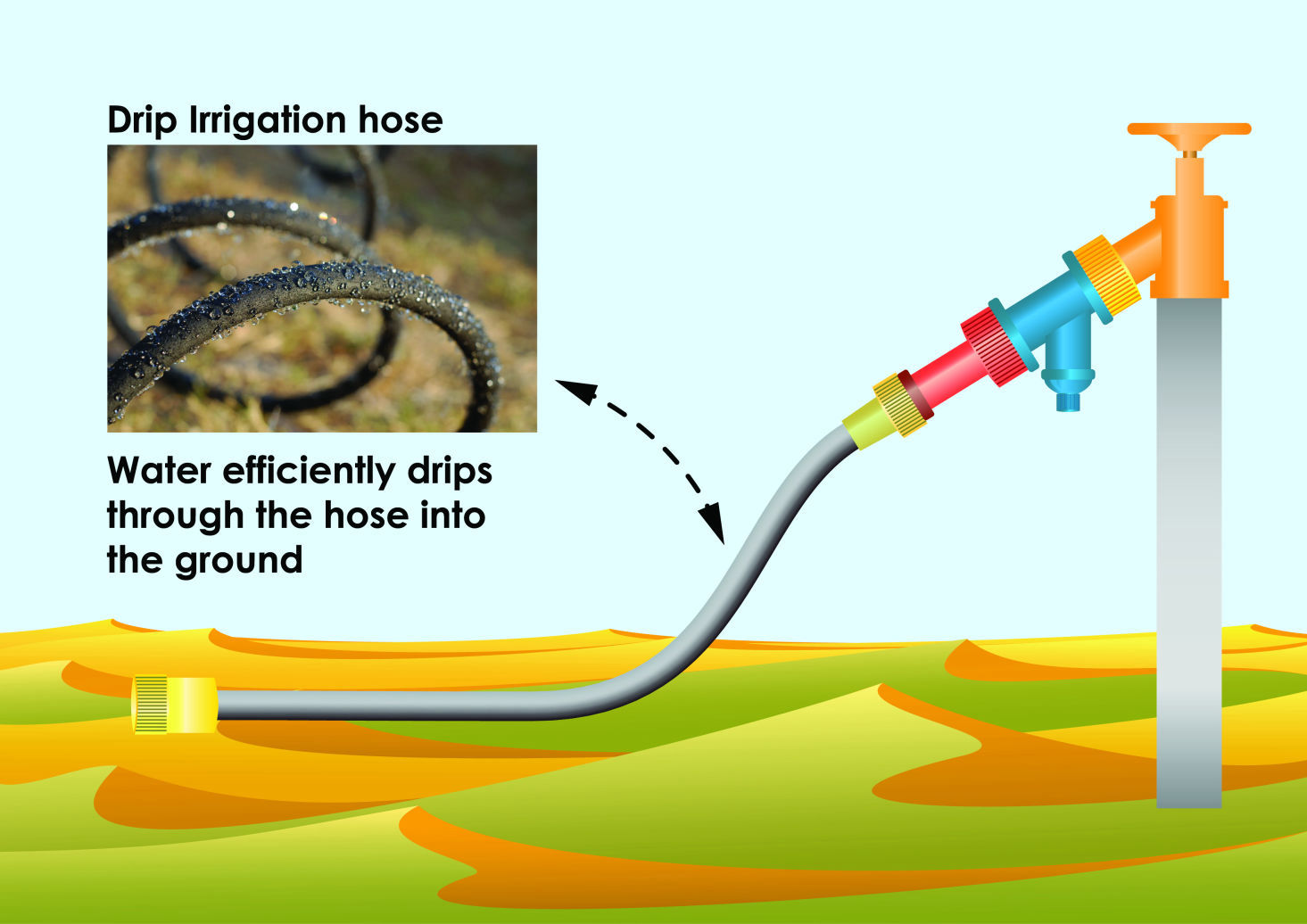
Chemigation (a made up word) can also take place (the application of pesticides and other chemicals). Drip irrigation can achieve water conservation; less water is wasted, and more crops are produced for the same amount of water used.
Drip irrigation has
advantages:
• Minimised fertiliser and nutrient loss due to
localised application
• High water application efficiency
• Minimised soil erosion
…and
disadvantages:
• It’s expensive – to install a system is
expensive - the ‘high initial cost’
• The system takes a lot of time to install,
because factors such as topography, soil,
agro-climatic conditions must be studied.
Other methods of preventing
desertification
Crop rotation – 4 to 6 year rotations of barley, wheat, potatoes and clover, increasing the water absorbing capacity of the soil.
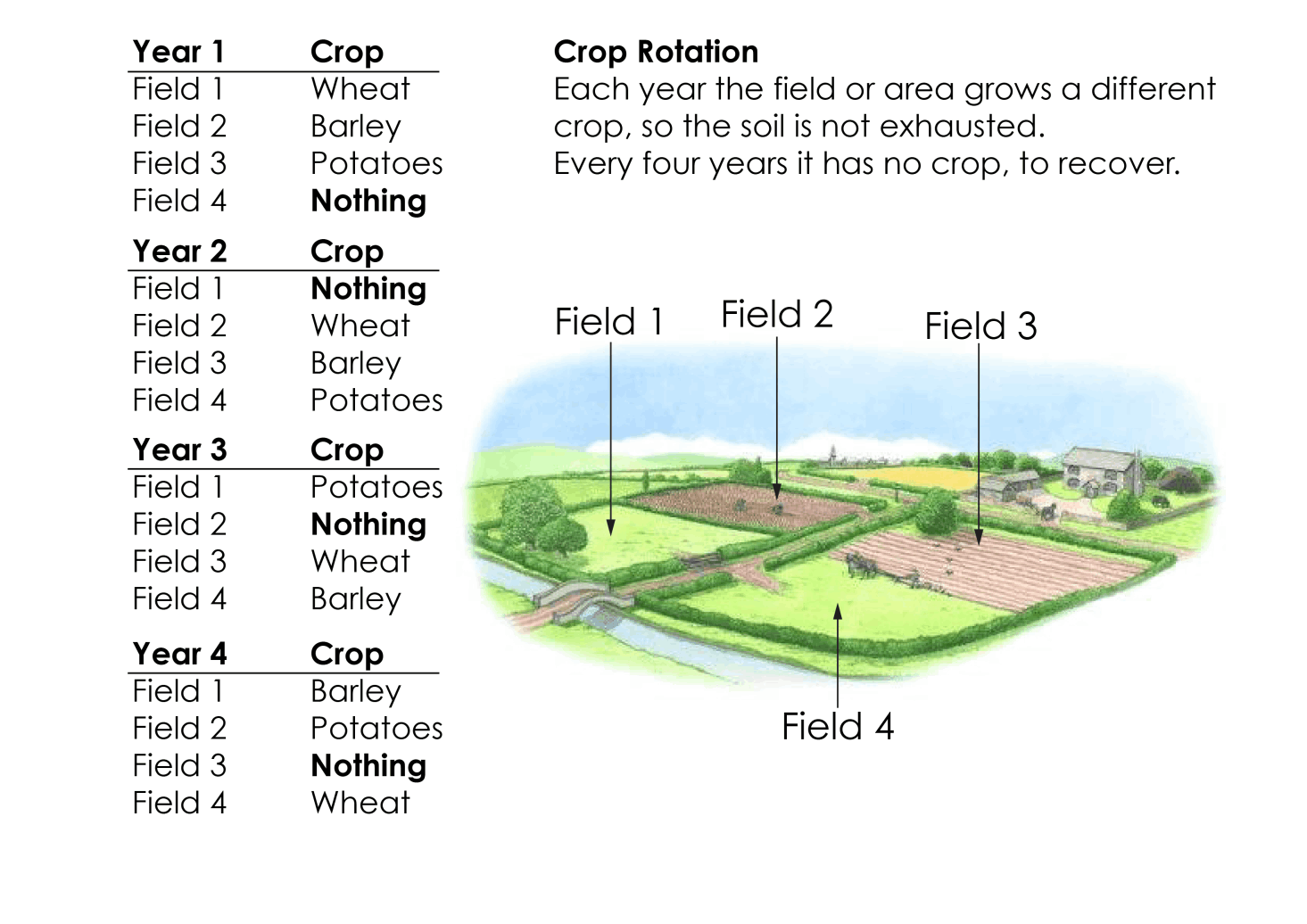
Preventing cattle from grazing – trampling of soil reduced ground cover and reduced the soil’s capacity to hold water. Grazing also delayed tree growth, which means that rain water can more easily wash top soil away, as there is no protection.
Contour Ploughing - ploughing slopes horizontally not vertically to reduce soil erosion by water and wind. Here's one type:
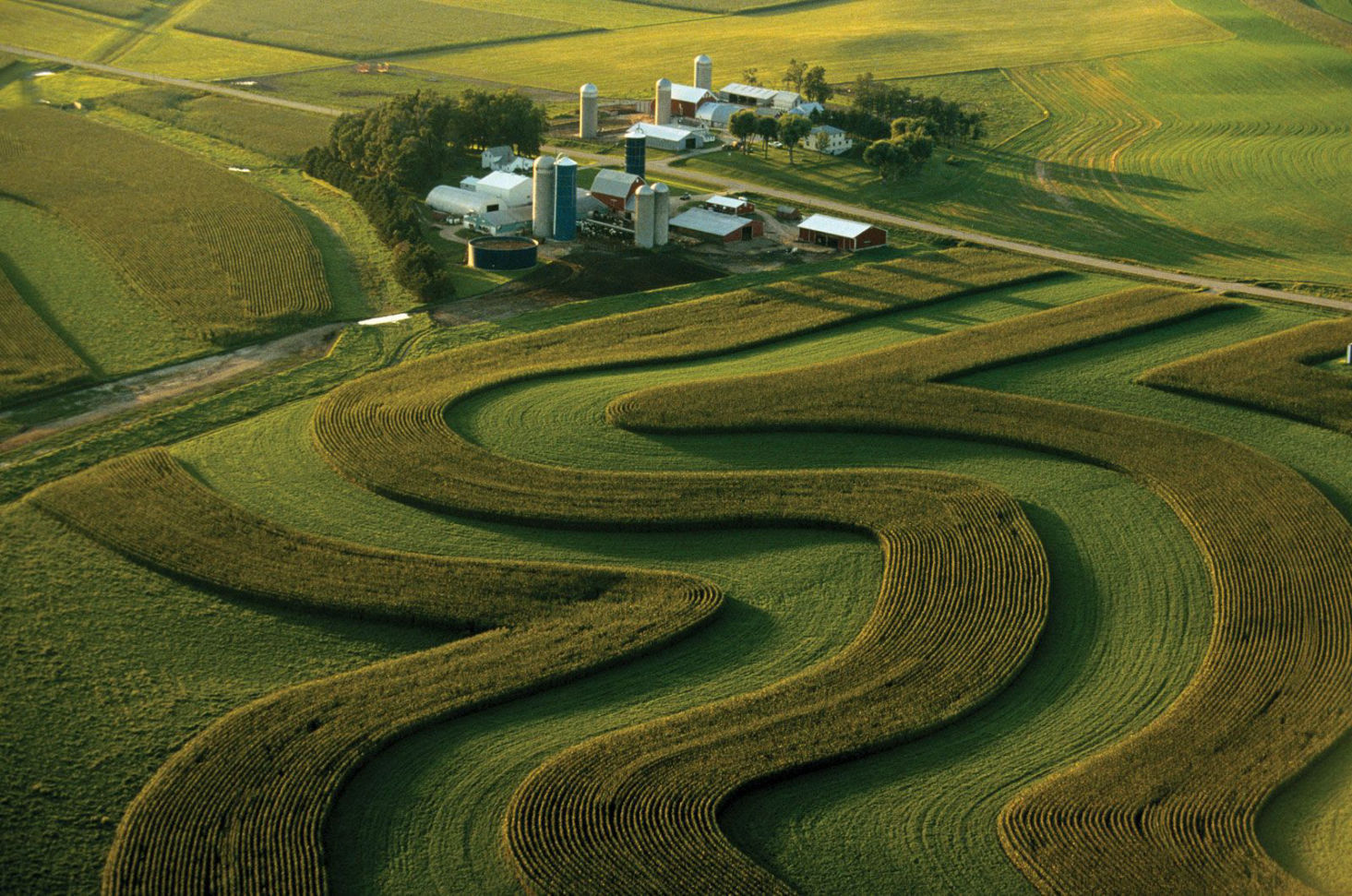
And one with which we are more familiar:
